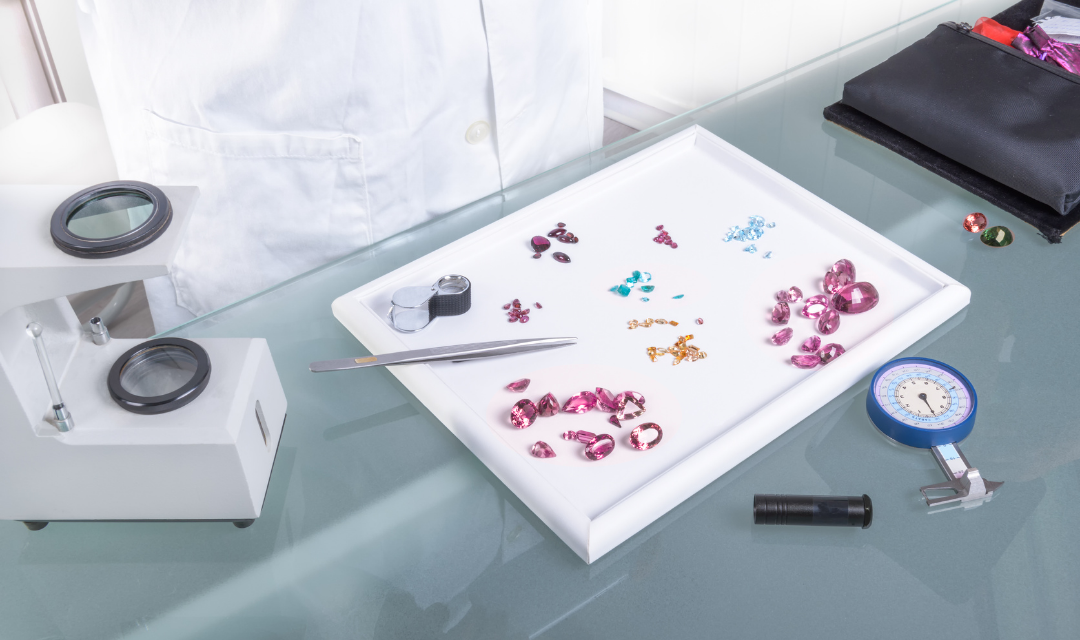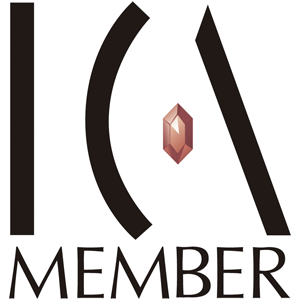
Next Shows
Follow our shows calendar HONG KONG INTERNATIONAL DIAMOND, GEM & PEARL SHOW 2024 February 27th to March 2nd, 2024 It will be a pleasure to

Learn about some of the main criteria used to assess the commercial value of a gemstone.
Jewelry such as necklaces, earrings, and even engagement rings are capable of eternalizing a moment, as they are associated with the idea of rarity and durability. However, in addition to this peculiar and emotional value that precious stones have, it is possible to discover their commercial value through some observations.
This type of assessment is extremely important for the market, as these enchanting stones are desired all over the world. The truth is that regardless of how these rarities are used, whether in jewelry making, decorations or collections, it is essential to evaluate them carefully.
Do you want to understand better how the definition of the commercial value of a stone happens in practice? Read on and stay on top of the subject.
Precious stones or gemstones, as they are also known, are not easily found in nature. The rarity of these gems makes them extremely valuable and desired objects. It is important to remember that most of these stones are found in their raw state, which means, they go completely unnoticed among rocks and places that are often inaccessible. Only people with knowledge in gemology can identify them accurately.
See the main criteria used by gemologists to assess the commercial value of a gemstone:
The more intense the color, the higher the market value the stone will be. It is noteworthy that, in this case, the diamond is an exception: the more colorless, the more valuable. However, if a diamond has a defined color, the criteria of more intense colors is used again.
When analyzing the colors, some specifications are considered:
Hue: the basic color in question, such as green, blue, and red (most popular colors on the market, commonly seen in emeralds and tourmalines, sapphires and aquamarine, rubies and rubellites);
Saturation: color intensity, that is, it measures the degree of vividness of a gem;
Tone: the absorption of light or dark tones from the main hue, which may or may not bring out the stone at night, for example.
Another extremely relevant criteria when evaluating a stone is its clarity. Small fragments or particles, for example, can affect the purchase price. The more pure or “cleaner” the stone is visually, the higher is its market value.
In some cases, when small nicks or inclusions can only be identified with the support of magnifying equipment, the clarity criterion is no longer relevant for pricing. In other words, any impurity seen with the naked eye weighs much more.
It is worth remembering that some of these internal or external characteristics such as cracks, for example, can influence the durability of the stone, which is also taken into account.
Another factor considered is the quality of the cutting. It happens because even if the stone has a good color, a poor cut may damage its ideal appearance. Therefore, during cutting, it is necessary to pay attention to the shape, the cutting style, the proportions and angles of the facets, the symmetry, and the finish, especially the final polishing. A poorly cut stone does not have a good market acceptance.
To understand how it works in practice, imagine that when a gemstone is cut correctly, with perfect angles and cuts, it will have maximum shine and sparkle. That’s why this process is so relevant when evaluating the economic value of a gemstone.
The size of the stone, or quantity of carats, is one of the most impactful factors in the assessment. A carat refers to a unit of weight for diamonds and other precious stones.
One carat = 200 milligrams (0.200 grams, which is to say 1 gram = 5 carats).
An interesting observation, is that a two-carat stone has greater commercial value than two stones of one carat each, because the larger a gemstone is, the rarer and more valuable it becomes.
Anyway, these are some of the main criteria for evaluating a gemstone. These observations added to individual taste and fashion trends are decisive for buying and selling gems and jewelry.
Marcelo Bernades is a Mining Engineer and Gemologist who graduated by GIA / GG-Graduate Gemologist, owner of the cutting and exporting company MBERNARDES.
Source: Brazil Gems

Follow our shows calendar HONG KONG INTERNATIONAL DIAMOND, GEM & PEARL SHOW 2024 February 27th to March 2nd, 2024 It will be a pleasure to
Belo Horizonte – MG


